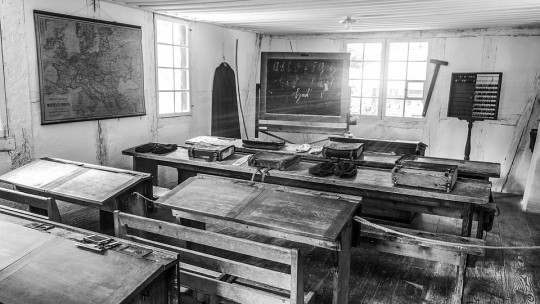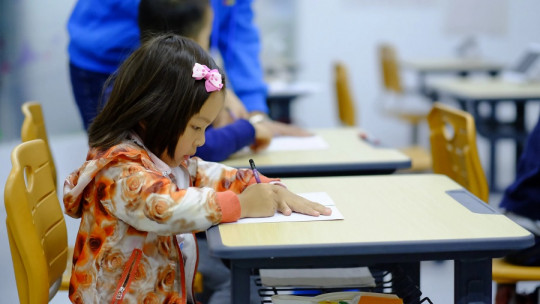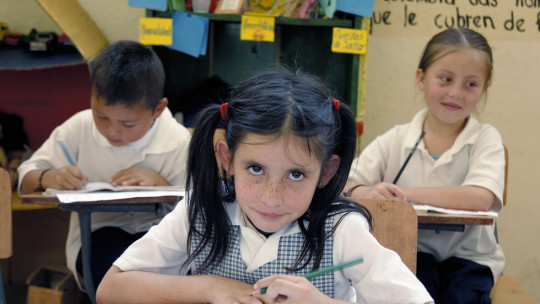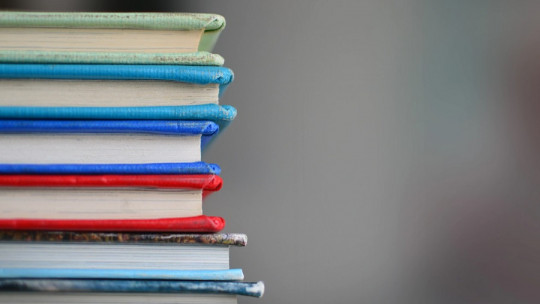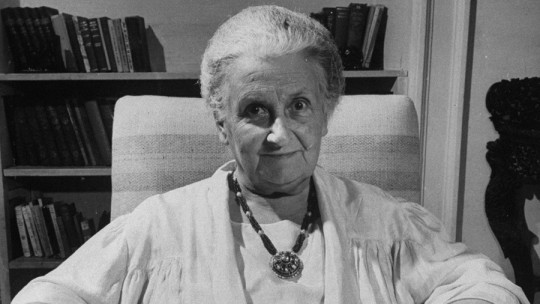
Among the many pedagogical models that exist, the romantic one proposes a series of innovative premises compared to the traditional ones.
In order to know exactly what this system consists of and what are the keys it presents in contrast to other models, we are going to describe it in depth throughout this article. So we will know What are the characteristics of the romantic pedagogical model its strong points and also its weak points.
What is the romantic pedagogical model?
The romantic pedagogical model is a teaching approach focused on the child himself over the contents that are proposed. Thus, proposes giving the infant total freedom in the classroom so that their potential is not limited in any way, so that it can develop everything it houses inside. Therefore, the first fundamental issue for this methodology is to guarantee absolute flexibility.
What the romantic pedagogical model seeks is that there is no interference in the environment that could in any way restrict the child’s behavior and spontaneous learning process. What is sought is to guarantee a totally natural development. To do this, it is also necessary that the teacher first leaves behind his traditional role and becomes just an assistant in a process in which the child is the protagonist.
It will be very important, therefore, that the teacher dispenses with the classic guidelines based on rules and discipline and on the contrary encourages the child to give free rein to his expression in a free way All content is relegated, like the teacher, to the background. It may seem like an overly idealized scenario, but there is a reason it is called a romantic pedagogical model.
It seems, therefore, that what the defenders of this methodology affirm is that the most important thing in the educational process is not what we try to instill in children, but what they already carry within them in some way, a potential that is unique in each of them. That’s why The teacher must be a neutral figure who simply accompanies them to bring out that creativity and those skills that are innate to them to take them to their maximum exponent.
emotional education
The precursor of the romantic pedagogical model is Alexander Sutherland Neill, a Scottish educator famous for creating the Summerhill School, the great banner of free education. The key to this proposal, according to Neill, was the belief that every human being was naturally good. Therefore, it is not necessary to spend years of schooling turning children into model adults, but rather to have them discover it for themselves.
Therefore, what it proposes is to provide students with an environment of absolute freedom and security, where they can explore and develop their skills without a set direction. Because? Because for AS Neill emotional education is much more important than intellectual concepts. For this reason, she did not want to repress them, preventing them from expressing their impulses. He also didn’t trust traditional competitive methods.
For Neill, emotional education was such an important element because it represented the path to the development of happiness for each child and there could be nothing above that. Therefore, under this principle, If the traditional system of education based on formal education were maintained, even if the teacher’s style was closer to the student, it would still represent oppression towards children for curtailing their freedom.
Still, Alexander Neill did consider some limits to this freedom. For example, in any situation that could cause harm to the students. In that case, teachers should ensure the safety of children until they could provide their own protection from dangers. Likewise, freedom should not mean debauchery. Neill claimed that with sufficient autonomy, children would self-regulate
Advantages of the romantic pedagogical model
After a general tour of the pillars on which the romantic pedagogical model is based and on the vision of one of the pioneers in the use of this system, we are in a position to review the most important advantages that this methodology provides compared to those of a similar nature. more classic. Let’s look at some of them.
1. Absolute freedom
Freedom is the basis of the romantic pedagogical model. That principle is irreplaceable. Therefore, the first advantage that this method provides is going to be a scenario of free action for children that had never been provided to them before and that offers a whole new series of possibilities that were previously somewhat blocked by rules and regulations. regulated content of classical methodologies.
This freedom has a very important effect and that is that causes children to have a better reception of concepts, since they themselves choose those that interest them most and they approach them entirely of their own free will. Thanks to this process, their retention will be more satisfactory than in the face of models that try to impose them in one way or another, without giving that capacity for choice and autonomous approach.
2. Promotes self-regulation
We had already pointed out that what Neill defended with the romantic pedagogical model was not a debauchery in his students, but a freedom so pure that they themselves, by experimenting, were able to discern what was correct and what was not, thus achieving the self-regulation they need to know how to behave in society in any type of situation.
The objective is for them to acquire this ability to self-regulate without having to give up being who they are in the process And the maxim of this model is to give all the facilities to children so that they can express the potential they harbor within themselves. In this process, they will also learn to self-regulate.
3. Preparation for adult life
Likewise, AS Neill affirms that this work to promote the emotional education of children makes them capable of facing all types of situations because have acquired the capabilities by having been able to explore the environment without any hindrance Therefore, when they are adults they will be ready to face any challenge, just as they had done during their childhood in a free environment.
Disadvantages of this way of educating
Defenders of the romantic pedagogical model defend this very optimistic vision that we have seen, as is logical. But it is true that not all educators agree with the proposal and affirm that the advantages are not entirely clear and that it also presents some disadvantages that we cannot ignore. These are some of the most important ones.
1. A controversial model
The excess of freedom proposed by the romantic pedagogical model has been the subject of controversy. In fact, in the Summerhill School itself, founded by AS Neill, there was freedom and naturalness for any action and this included the sexual field, which, in a society as puritan as the English one at the beginning of the 20th century, was a provocation in every rule.
However, Neill always defended the concept of freedom as the absence of oppression, both from adults towards children but also from children towards adults, or between adults or between children. Therefore, The liberal environment did not imply that any individual could always do what he wanted, since it was essential that their actions did not represent an attack on the rights or freedoms of others. That was the key to achieving the self-regulation that Neill advocated.
2. Absence of content
Although the romantic pedagogical model aims to achieve fully autonomous, free adults with their inner potential developed, there is a very important issue that is one of the main disadvantages of this model. It refers to the absence of fixed content. Let us remember that the lesson contents were not imposed, but rather the children themselves chose based on their interests.
The logical consequence of this freedom of choice is a lack of specific content that each child was going to have in the subjects that did not interest him and that in the future would cause difficulties in being able to continue his studies or even face the workplace with a sufficient base to be able to carry out certain jobs.
3. Teacher shortage
The third major drawback of the romantic pedagogical model is a great lack of adequate teachers to be able to carry out their work within the premises of this methodology. Very few have adequate training, which makes it difficult to create schools based on this system.
4. Regulated education
Today, in countries like Spain, Education is so regulated and the contents are so specific that it is very difficult if not impossible, to implement a methodology like that proposed by the romantic pedagogical model, at least in its purest version.

